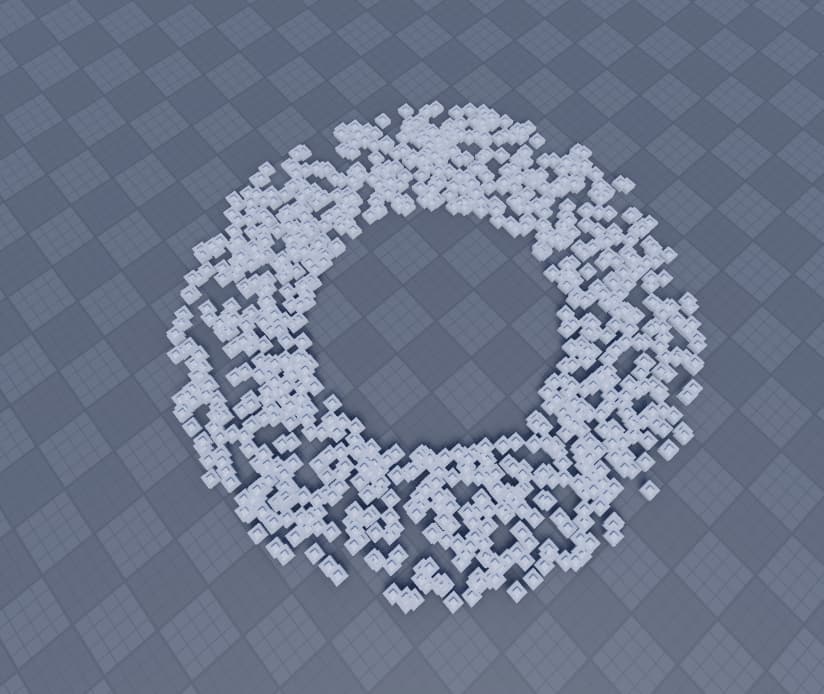Is there a mathematical formula for choosing random positions within the shaded area? I thought about just ignoring all the chosen locations inside the white area but it’s quite large and my current formula based on a circle would choose the white circle 60% of the time.
Assuming this is in a 3D space, you could make a function that looks something like this:
local min_distance , max_distance = 5,10
local origin = Vector3.new(0,0,0)
function is_within_ring(position)
local distance = (origin - position).Magnitude
return distance > min_distance and distance < max_distance.
end
This would get you something like result shown on the image, however, since this takes height into account this’d be closer to a sphere and not a cylinder, if you wanted it to be a cylinder, you would just have to make the y component in the distance calculation 0, like this:
function is_within_ring(position)
local distance = (origin - position * Vector3.new(1,0,1).Magnitude
return distance > min_distance and distance < max_distance.
end
You’d choose a first random number between 0 and 2*pi as a random angle in radians which are passed to sine and cosine to generate a unit vector with a random direction, and then a random number as distance between your minimum and maximum radii
Something like this should work for generating a random point in a ring around the origin, you can then offset the last position so the ring is centred around an arbitrary point:
local random = Random.new()
local function randomPointInRing(minRadius, maxRadius)
local angle = random:NextNumber(0, 2 * math.pi) -- 0-360 degrees
local cos = math.cos(angle) -- x component of a supposed unit vector
local sin = math.sin(angle) -- y component of a supposed unit vector
local radius = random:NextNumber(minRadius, maxRadius)
local x = radius * cos -- unit * random radius
local y = radius * sin -- unit * random radius
return Vector2.new(x, y) -- or Vector3.new(x, 0, y)
end
So what you’re saying is I get a random point inside the outer circle and eliminate any point chosen outside the min and max values. Kind of sounds like what I’m already thinking. The issue is that if a point is chosen in the shaded area then I’m good but if I choose a point inside the white circle the function tries again, and again, and again until a new point in the shaded area is chosen. This means the function could run hundreds of iterations before it finds a true statement (correct location).
True, the other solution is better since it always provides a correct result.
Oh ty, this looks good. I will test it when I can and set solution when it works.
I played around with the numbers and while it makes no sense (size/2.75 – to get the radius of a circular part) to me it seems to work fine so I’m happy enough.
The radius of a circular part would be 0.5 * the part’s width (or the width / 2)
Yeah, that was not the case inside a curved bowl. Like I said I played with the numbers and got some interesting results not to mention each ring had different numbers to make it work.
This topic was automatically closed 14 days after the last reply. New replies are no longer allowed.


